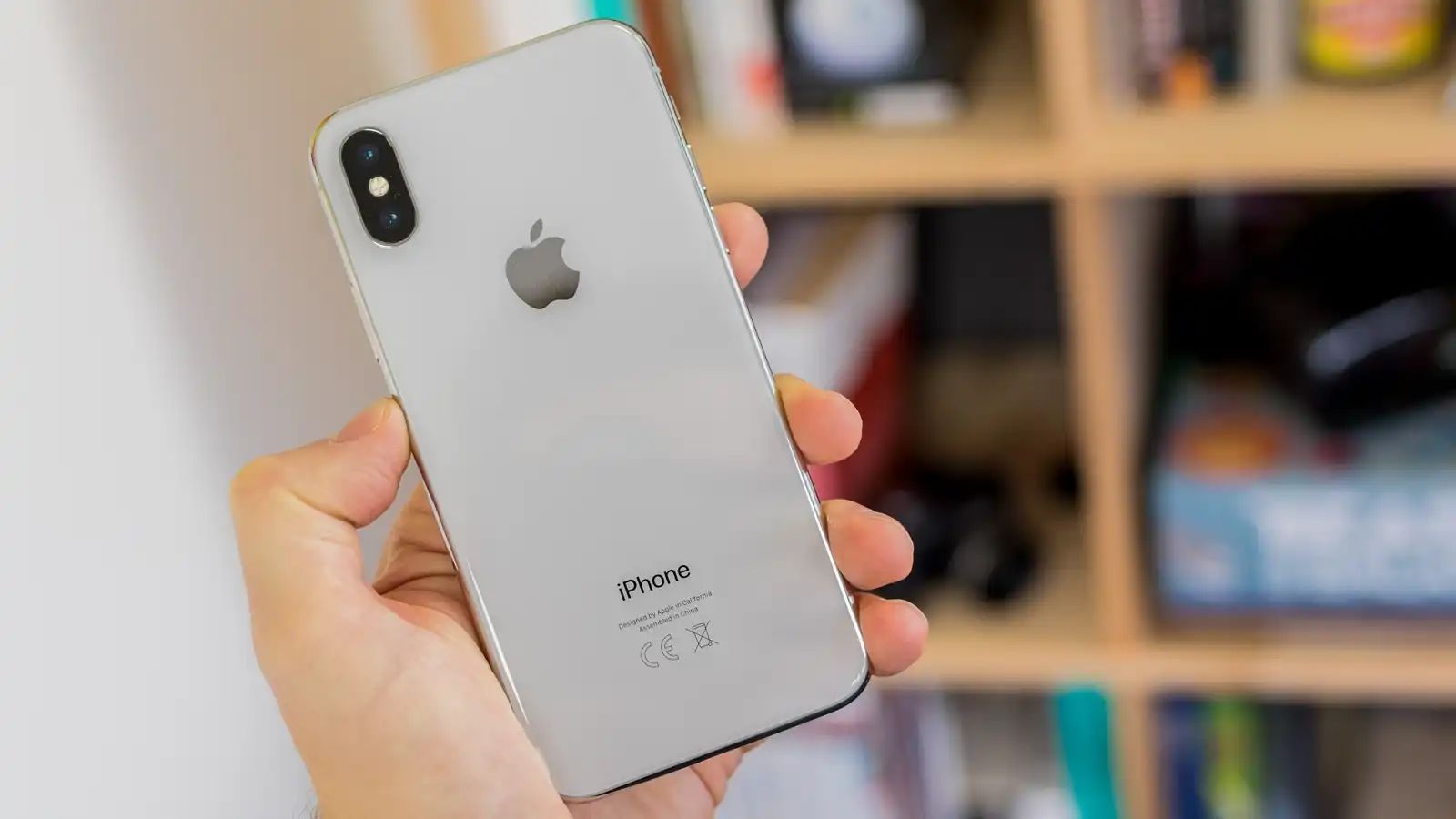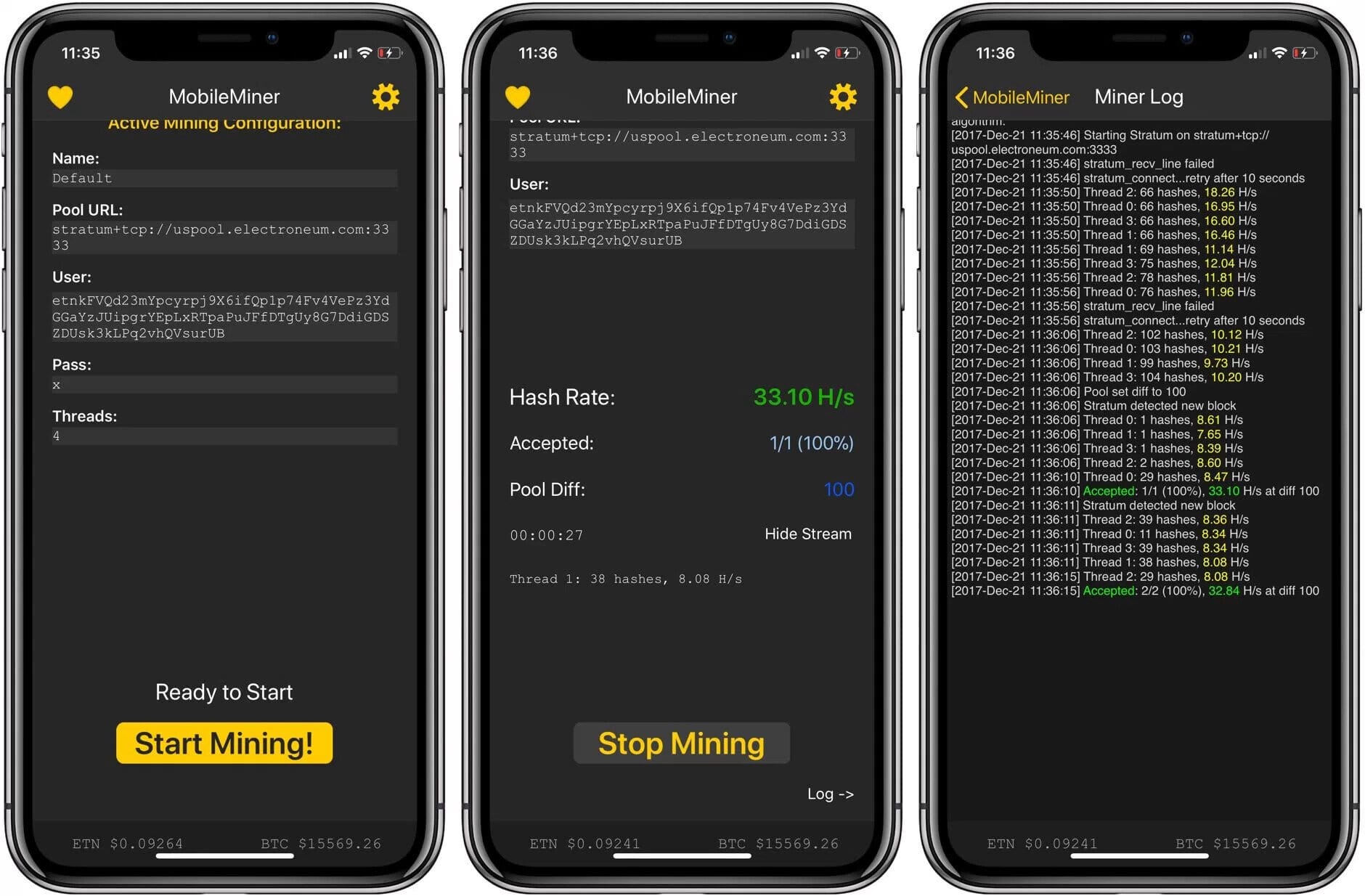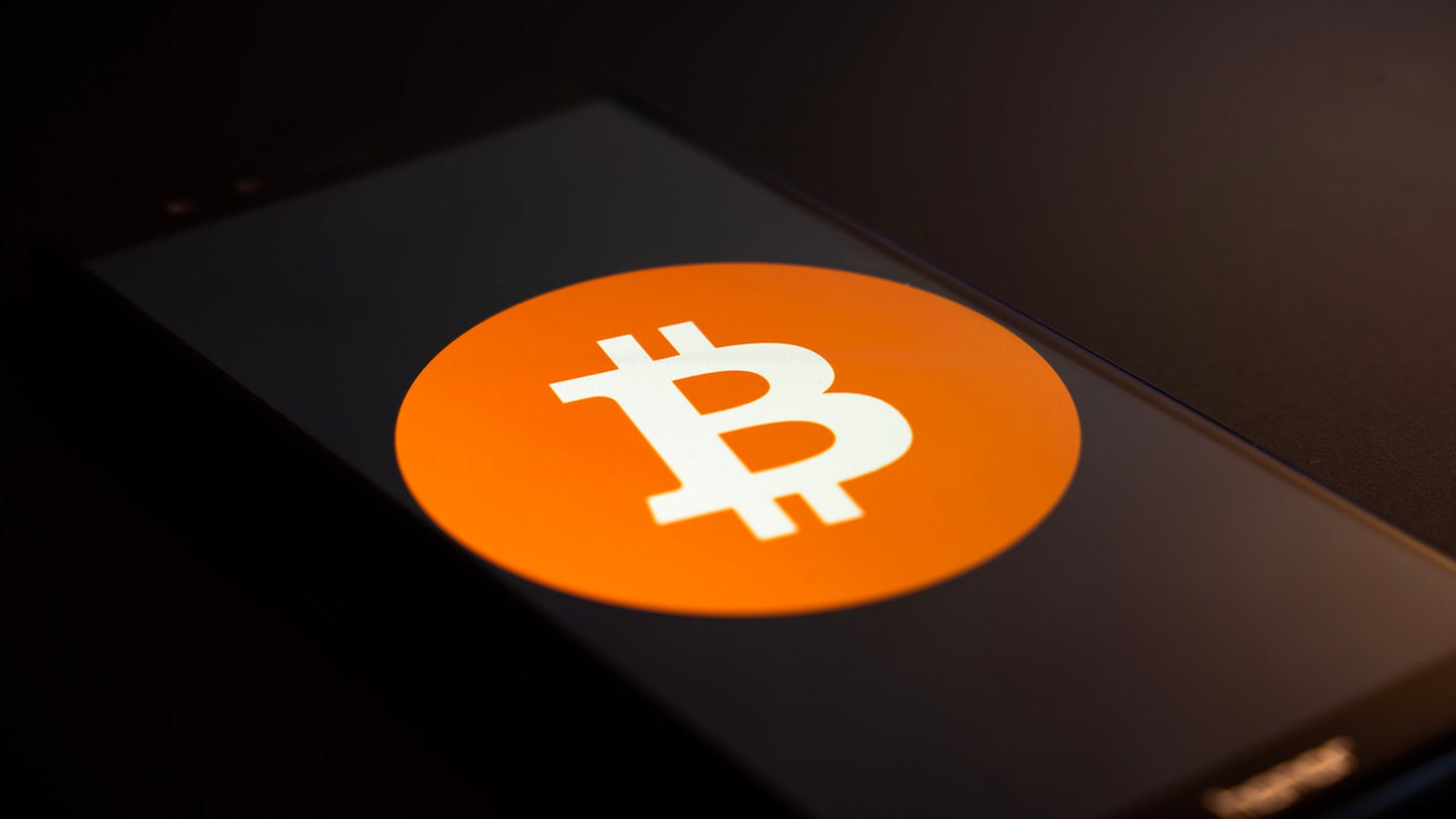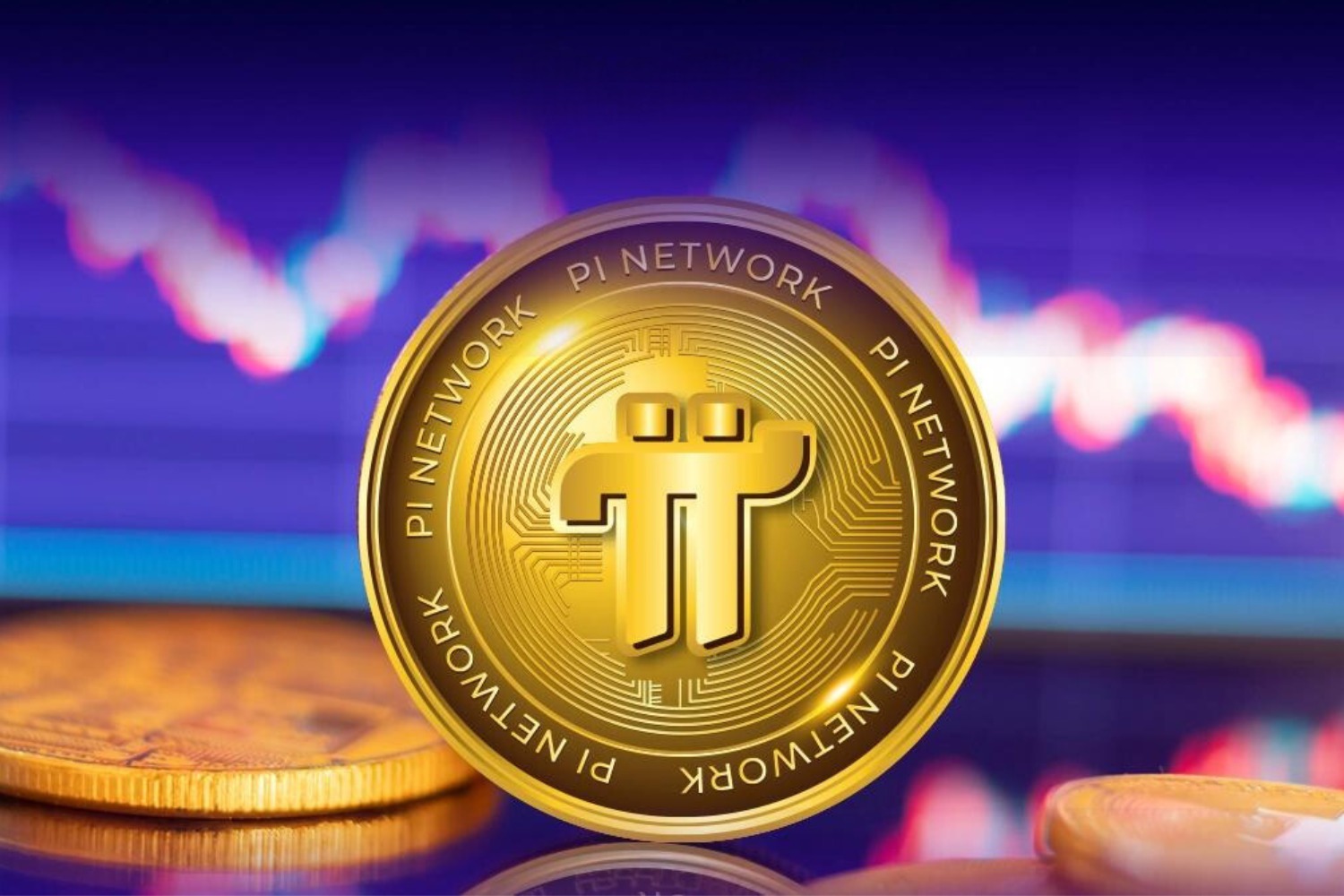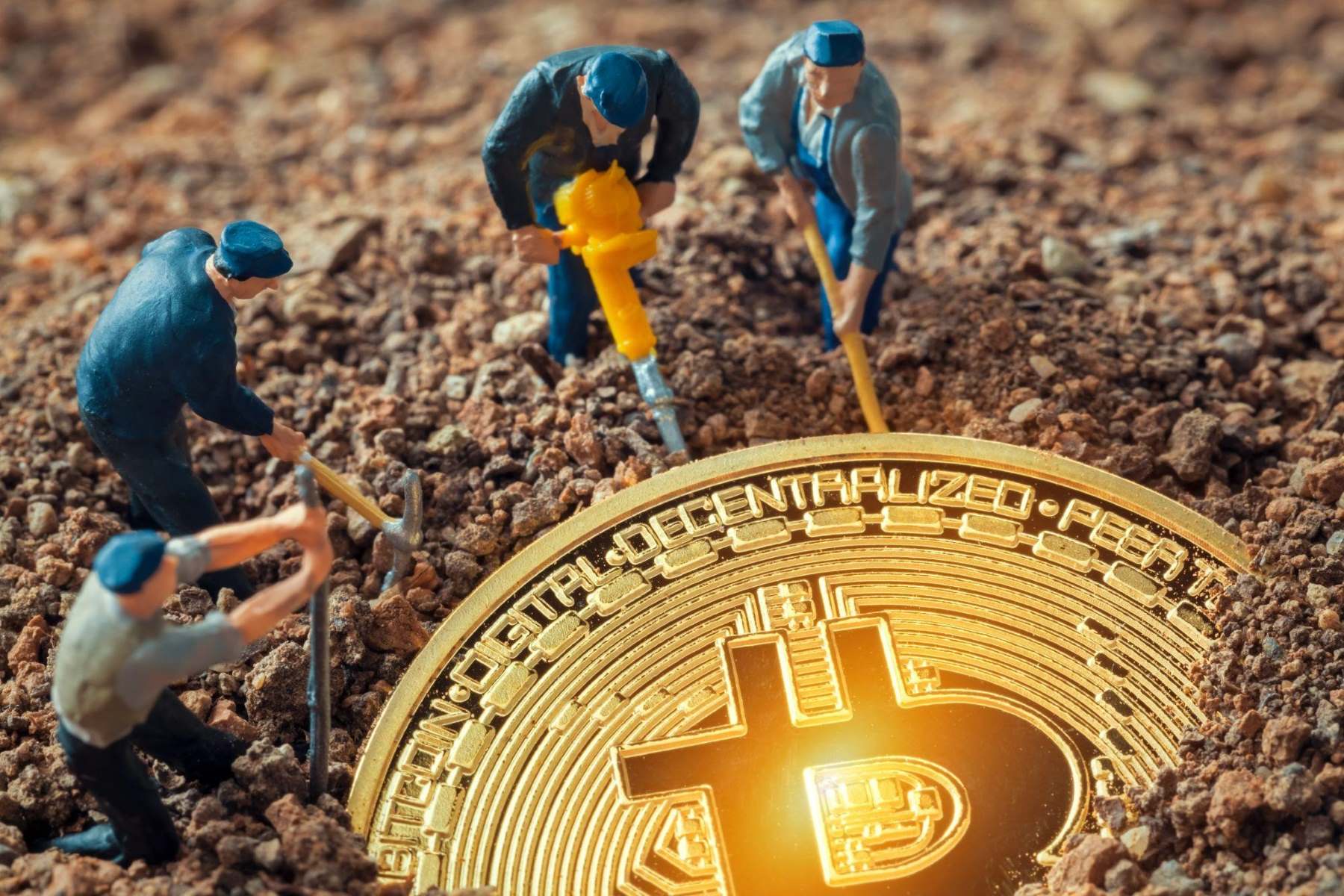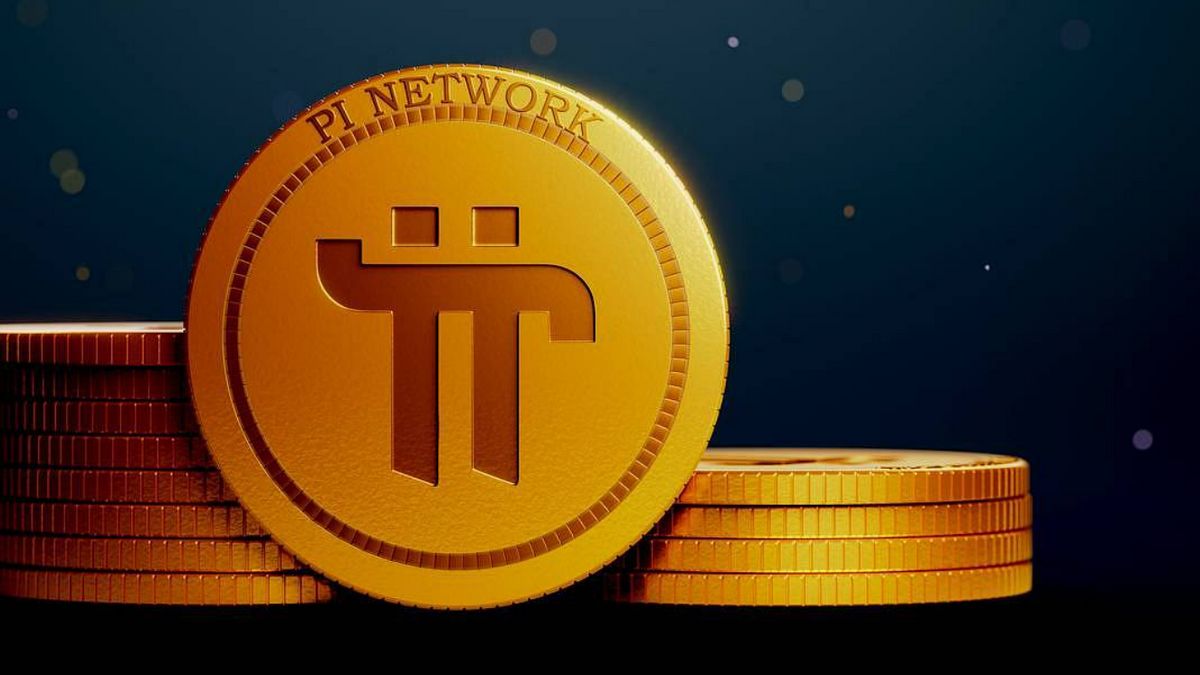Introduction
Welcome to the world of cryptocurrency mining, where digital currencies are created through complex computational processes. Cryptocurrency mining has traditionally been done on powerful computers, but with the rise of mobile technology, many people wonder if they can mine cryptocurrencies on their phones. In this article, we will explore the feasibility of mining cryptocurrency on a mobile device and provide you with the necessary information to get started.
Cryptocurrency mining involves solving complex mathematical equations to verify and record transactions on a blockchain network. This process requires significant computational power, which has led to the use of specialized mining rigs and powerful computers. However, advancements in mobile technology have made it possible to mine cryptocurrencies on smartphones and tablets.
Before diving into the world of mobile mining, it’s important to understand that the profitability of mining on a phone is significantly lower compared to dedicated mining hardware. Mobile devices are not designed for intensive computing tasks, and their limited processing power and battery life can impact mining performance. However, if you are curious about mining and want to get started with minimal investment, mobile mining can be a great entry point.
In the following sections, we will discuss the steps involved in setting up a mobile mining app, configuring your phone for optimal performance, and managing the risks and limitations of mobile mining. We will also help you evaluate whether mobile mining is worth your time and resources.
It’s important to note that the cryptocurrency market is highly volatile, and mining profitability depends on various factors such as the cryptocurrency being mined, mining difficulty, electricity costs, and market fluctuations. Additionally, not all cryptocurrencies can be efficiently mined on mobile devices, so it’s crucial to choose the right cryptocurrency to mine.
In the next section, we will delve deeper into the world of cryptocurrency mining and discuss its various aspects to provide you with a comprehensive understanding of the subject.
Understanding Cryptocurrency Mining
Cryptocurrency mining is the process of validating and recording cryptocurrency transactions on a blockchain network. In traditional financial systems, transactions are validated by centralized entities like banks or government institutions. However, cryptocurrencies operate on decentralized networks, where transactions are verified by a network of computers.
When a cryptocurrency transaction occurs, it needs to be authenticated and added to the blockchain, which is a digital ledger that records all transactions. Miners play a crucial role in this process by solving complex mathematical problems that validate transactions and add them to the blockchain.
Miners use powerful computers or specialized mining rigs to perform these computations. The computational power is measured in hash rates, which indicate the number of calculations that can be performed per second. The more powerful the mining equipment, the higher the hash rate and the greater the chances of successfully mining a block.
Each cryptocurrency has its own mining algorithm, which determines the specific computations required to validate transactions. Some cryptocurrencies, like Bitcoin, use the Proof-of-Work (PoW) algorithm, where miners compete to solve complex mathematical problems. Once a miner successfully solves the problem, they are rewarded with a certain amount of cryptocurrency.
As new blocks are added to the blockchain, the difficulty level of mining increases. This means that miners need more computational power and resources to solve the mathematical problems. In addition to the computational power, electricity consumption is also a significant factor in mining, as mining rigs consume a large amount of energy.
It’s important to note that not all cryptocurrencies can be efficiently mined using the same algorithm. Some cryptocurrencies, like Ethereum, are transitioning to a Proof-of-Stake (PoS) algorithm, where miners validate transactions based on the number of coins they hold, rather than computational power. This shift aims to reduce energy consumption and make mining more accessible to a wider user base.
Understanding the basics of cryptocurrency mining is essential before delving into mobile mining. In the next section, we will explore whether it’s feasible to mine cryptocurrencies on a mobile device and the factors you should consider before getting started.
Can You Mine Cryptocurrency on Your Phone?
With the increasing power and capabilities of smartphones, many people wonder if they can mine cryptocurrency on their mobile devices. The short answer is yes, you can mine cryptocurrency on your phone, but there are several factors you need to consider before diving into mobile mining.
While mining on a phone may sound convenient, it’s important to understand that mobile devices are not specifically designed for intensive computing tasks like cryptocurrency mining. The processing power and battery life of smartphones are limited compared to dedicated mining rigs or computers.
Mobile mining apps are available for both Android and iOS devices, allowing users to mine certain cryptocurrencies. However, the mining capability of mobile devices is significantly lower compared to specialized mining hardware. You are unlikely to mine a significant amount of cryptocurrency with just your phone.
Another important factor to consider is the heat generated during the mining process. Mining on a phone can quickly heat up the device, leading to decreased performance and potential damage. It’s essential to monitor the temperature of your phone and take precautions to ensure it doesn’t overheat.
Furthermore, mobile mining can drain your battery rapidly. The mining process requires constant computation, which consumes a significant amount of power. You may find yourself needing to recharge your phone more frequently, limiting its usability for other tasks.
The profitability of mobile mining also depends on the cryptocurrency being mined. Some cryptocurrencies are specifically designed to be mobile-friendly, with low computational requirements. However, these mobile-friendly cryptocurrencies may have lower market value and mining rewards.
It’s worth noting that mobile mining should not be seen as a get-rich-quick scheme. It’s more of an opportunity for individuals who are curious about mining and want to start with minimal investment. Mobile mining can serve as an educational experience and a way to be part of the cryptocurrency ecosystem.
In the next sections, we will guide you through the process of setting up a mobile mining app, configuring your phone for mining, optimizing performance, and managing the risks associated with mobile mining. We will also help you evaluate if mobile mining is worth your time and resources.
Now that we have discussed the feasibility of mobile mining, let’s move on to the crucial step of selecting the right cryptocurrency to mine on your phone.
Choosing the Right Cryptocurrency to Mine
When it comes to mobile mining, choosing the right cryptocurrency to mine is essential for maximizing your potential earnings. Not all cryptocurrencies can be efficiently mined on mobile devices, so it’s crucial to consider certain factors before making your selection.
An important aspect to consider is the mining algorithm used by the cryptocurrency. Different cryptocurrencies employ different algorithms, and some are more suitable for mobile mining than others. For example, cryptocurrencies that use algorithms like CryptoNight, Ethash, or Scrypt tend to be more mobile-friendly as they require less computational power.
It’s also important to consider the market value and profitability of the cryptocurrency. Higher-valued cryptocurrencies typically offer greater mining rewards, but they may also require more computational power to mine. You should research the market trends and mining difficulty of different cryptocurrencies to determine the potential profitability of mobile mining.
The popularity and adoption of the cryptocurrency should also be taken into account. Cryptocurrencies with a large and active community often have better long-term prospects. Look for cryptocurrencies that have a thriving ecosystem, with active development teams and a strong track record of updates and improvements.
Another factor to consider is the availability of mobile mining apps for the chosen cryptocurrency. Ensure that there are reliable and reputable mobile mining apps available for your preferred cryptocurrency. Look for apps with positive user reviews, regular updates, and security features to protect your mined coins.
Additionally, consider the energy efficiency of the mining algorithm. Some cryptocurrencies, like Bitcoin, require a significant amount of energy for mining, which may not be suitable for mobile devices with limited battery life. Look for cryptocurrencies that prioritize energy efficiency to ensure optimal mining performance on your phone.
Lastly, consider your personal interests and goals. Are you passionate about a specific cryptocurrency or the underlying technology? Do you believe in its future potential? Mining is not just about making a profit; it’s also about being part of a community and supporting your chosen cryptocurrency.
By considering these factors, you can narrow down your options and select the right cryptocurrency for mobile mining. Remember to conduct thorough research and stay updated with the latest trends and developments in the cryptocurrency market.
Now that you have an understanding of how to choose the right cryptocurrency, we will guide you through the process of setting up a mobile mining app in the next section.
Setting up a Mobile Mining App
Once you have selected the cryptocurrency you want to mine on your phone, the next step is to set up a mobile mining app. Mobile mining apps are available for both Android and iOS devices, and they provide a convenient way to mine cryptocurrencies on the go. Follow these steps to get started:
1. Research and choose a reputable mining app: Look for a mining app that supports the specific cryptocurrency you have chosen to mine. Consider factors such as user reviews, security features, ease of use, and regular updates. Popular mining apps include MinerGate, Crypto Miner, and Electroneum.
2. Download and install the app: Visit the official app store for your device (Google Play Store for Android or App Store for iOS) and search for the chosen mining app. Download and install it on your phone following the provided instructions. Be cautious of unofficial or suspicious apps, as they may compromise your security.
3. Create an account: Launch the mining app and create an account if required. Provide the necessary information and follow the registration process. Make sure to use a strong and unique password to protect your account.
4. Configure mining settings: Once you have created an account, you will need to configure the mining settings. Select the cryptocurrency you want to mine from the available options. You may also need to provide your cryptocurrency wallet address, which is where your mined coins will be deposited.
5. Start mining: After configuring the settings, you can start the mining process. The app will use the processing power of your phone to solve mathematical problems and mine the chosen cryptocurrency. Keep in mind that mobile mining will consume battery life and generate heat, so monitor your phone’s temperature and usage accordingly.
6. Monitor and manage your mining activity: Check the app regularly to monitor your mining progress and earnings. Some apps provide detailed statistics, including hash rate, mining difficulty, and estimated earnings. You can also adjust the mining settings, such as the mining intensity, to optimize performance or conserve battery life.
7. Stay updated: Keep the mining app updated to ensure you have the latest features and security patches. Developers often release updates to improve performance and address any vulnerabilities.
Remember that mobile mining is not a guaranteed way to make substantial profits. It is more of a supplementary or educational activity. The earnings from mobile mining are typically lower compared to traditional mining rigs or dedicated computers. Set realistic expectations and consider the risks and limitations associated with mobile mining.
In the next section, we will guide you through the process of configuring your phone for mining and optimizing the performance of your mining app. These steps will help you make the most out of your mobile mining experience.
Configuring Your Phone for Mining
Configuring your phone for mining is an essential step to ensure optimal performance and minimize any potential issues. Follow these guidelines to configure your phone for mining:
1. Check system requirements: Before starting the mining process, ensure that your phone meets the minimum system requirements of the mining app. Some mining apps may require a specific operating system version or a certain amount of available storage space. Make sure your phone meets these requirements to prevent any compatibility issues.
2. Enable developer options: To access advanced settings on your Android device, you need to enable the developer options. Go to the “Settings” menu, scroll down to “About phone,” and tap on “Build number” multiple times until it shows you are now a developer. This will unlock the developer options menu in your phone’s settings.
3. Adjust performance settings: In the developer options, you can modify the performance settings of your phone. Look for options related to processor speed, animation scales, and background process limits. Adjust these settings to prioritize performance over battery saving or background processes, which can improve the mining efficiency of your phone.
4. Disable battery optimization: Most smartphones have battery optimization features that restrict the performance of certain apps to conserve battery life. However, for mining purposes, it’s best to disable battery optimization for your mining app. Go to the “Battery” settings in your phone’s settings menu and find the option to exclude the mining app from battery optimization.
5. Keep your phone up to date: Regularly update your phone’s operating system and apps to ensure you have the latest security patches and performance improvements. New updates may also address any compatibility issues with the mining app or introduce features that enhance mining performance.
6. Use a stable internet connection: A stable and reliable internet connection is crucial for successful mining. Make sure you are connected to a secure, high-speed Wi-Fi network or have a stable cellular data connection. Unstable or intermittent connections can disrupt the mining process and result in lower mining efficiency.
7. Monitor temperature and usage: During mining, your phone may heat up due to the increased processing demand. Monitor the temperature of your phone and take necessary precautions to prevent overheating. Avoid mining for extended periods without giving your phone a break to cool down. Additionally, keep an eye on your phone’s battery usage and recharge as needed.
By configuring these settings, you can optimize your phone’s performance for mining and ensure a smooth mining experience. However, it’s important to keep in mind that mobile mining has its limitations, and the profitability may be lower compared to traditional mining methods. In the next section, we will explore ways to optimize the mining performance on your phone to maximize your potential earnings.
Optimizing Mining Performance
To maximize your mining performance on your phone, there are several strategies you can employ. While mobile mining may not yield the same results as traditional mining methods, these optimization techniques can help you get the most out of your mining experience:
1. Choose the right mining app: Different mining apps have varying levels of optimization and features. Research and select a mining app that is known for its efficiency and performance. Consider user reviews and look for apps that regularly update their software to improve mining capabilities.
2. Adjust mining intensity: Some mining apps allow you to adjust the mining intensity, which determines the amount of processing power utilized for mining. Experiment with different intensity settings to find the right balance between mining performance and battery life. Higher intensity levels will consume more battery but may yield higher mining rates.
3. Consider mining during low-power consumption periods: Mining on your phone can consume a significant amount of battery power. Consider mining during periods when you have access to a power source, such as when your phone is charging or when you have a power bank available. This ensures that you can mine for extended periods without worrying about draining your phone’s battery.
4. Utilize mining pools: Joining a mining pool can increase your chances of earning rewards. Mining pools aggregate the computational power of multiple miners, increasing the collective mining capacity. This can help you mine more efficiently and receive more consistent mining rewards. Look for reputable mining pools that offer support for mobile mining.
5. Monitor and analyze mining statistics: Many mining apps provide detailed statistics about your mining activity, including hash rate, mining difficulty, and estimated earnings. Monitor these statistics and analyze trends to identify patterns that optimize your mining performance. This information can help you make informed decisions about tweaking mining settings or exploring more profitable cryptocurrencies.
6. Stay updated on mining trends: The world of cryptocurrencies and mining is continuously evolving. Stay updated with the latest news, technological advancements, and mining strategies. This knowledge can help you adapt your mining approach and identify new opportunities for improving your mining performance.
7. Consider mining alternative cryptocurrencies: While popular cryptocurrencies like Bitcoin may not be profitable to mine on mobile devices due to high mining difficulty, there are alternative cryptocurrencies specifically designed for mobile mining. Explore and research these cryptocurrencies to identify potentially more profitable options for mining on your phone.
Remember that mobile mining should be approached with realistic expectations. The profitability of mining on a phone is generally lower compared to using dedicated hardware. Consider it more as an educational and supplementary activity rather than a primary source of income.
In the next section, we will discuss the risks and limitations associated with mobile mining, helping you make an informed decision about whether mobile mining is worth your time and resources.
Understanding the Risks and Limitations
While mobile mining can provide a convenient way to participate in cryptocurrency mining, it’s crucial to be aware of the risks and limitations involved. Understanding these factors will help you make informed decisions and mitigate potential drawbacks. Here are some key aspects to consider:
1. Limited processing power: Mobile devices are not designed for intensive computing tasks like mining. Their processing power is significantly lower compared to dedicated mining rigs or computers. As a result, the mining performance of mobile devices is relatively low, which means your mining rewards may be limited.
2. Heat generation and battery drain: Mining on a phone can cause the device to heat up quickly due to the increased computational demand. This can lead to performance degradation and potential damage if not monitored carefully. Additionally, mining requires a high amount of power, resulting in rapid battery drain. Be mindful of these effects and take necessary precautions to prevent overheating or running out of battery.
3. Mining profitability: The profitability of mobile mining is generally lower compared to using specialized mining hardware. The limited computational power and higher energy consumption of mobile devices make it challenging to compete with large-scale mining operations. Before getting into mobile mining, it’s important to assess the potential earnings and consider whether the returns justify the investment of your time and resources.
4. Security risks: Like any other activity related to cryptocurrencies, mobile mining carries security risks. Ensure that you download mining apps from trusted sources to minimize the risk of malicious software. It’s also crucial to secure your cryptocurrency wallet and employ strong authentication measures to protect your mined coins. Stay vigilant and keep your devices and software updated to avoid potential security breaches.
5. Compatibility and app limitations: Not all cryptocurrencies can be mined on mobile devices. Some mining apps have limitations on the supported algorithms or may only offer limited mining options. It’s essential to research and choose a mining app that supports the cryptocurrency you want to mine. Additionally, be aware that not all mining apps are available for both Android and iOS devices.
6. Market volatility: The value of cryptocurrencies can be highly volatile, which can impact the profitability of mining. Market fluctuations can influence the value of the cryptocurrencies you mine, affecting your potential earnings. It’s important to stay informed about market trends and factors that can impact the value of the cryptocurrency you’re mining.
By understanding these risks and limitations, you can approach mobile mining with realistic expectations. While it may not be as profitable as traditional mining methods, mobile mining can be an educational and accessible way to engage with cryptocurrencies. Evaluate your goals, resources, and willingness to accept these limitations before embarking on mobile mining.
In the next section, we will help you decide if mobile mining is worth your time and resources by considering the various factors we have discussed so far.
Deciding if Mobile Mining is Worth It
After exploring the ins and outs of mobile mining, it’s time to evaluate whether it is worth your time and resources. Considering the following factors will help you make an informed decision:
1. Profitability: Mobile mining is generally less profitable compared to traditional mining methods using dedicated hardware. The limited processing power and high energy consumption of smartphones impact mining efficiency. Evaluate the potential earnings based on the chosen cryptocurrency, mining difficulty, and your device’s performance. Consider whether the returns justify the investment of your time and the impact on your phone’s battery life.
2. Cost and investment: Mobile mining typically requires minimal financial investment, as you only need a smartphone and an internet connection. However, consider the additional electricity costs and potential wear and tear on your device. Assess whether the potential earnings outweigh the costs and if you are comfortable with the financial implications.
3. Technical knowledge: Mobile mining may require some technical knowledge to set up and configure mining apps. Research the specific mining app and cryptocurrency you intend to mine to understand the requirements and procedures involved. Consider whether you are comfortable and willing to invest the time to acquire the necessary knowledge and troubleshoot any potential issues.
4. Purpose and curiosity: Mobile mining can serve as an educational experience and a way to be part of the cryptocurrency ecosystem. It allows you to gain hands-on knowledge of mining processes and understand the underlying technology. If your motivation is more curiosity-driven rather than solely financial, mobile mining can be a rewarding endeavor.
5. Risks and limitations: Understand and assess the risks and limitations associated with mobile mining, such as limited processing power, battery drain, heat generation, and security risks. Evaluate whether you are willing to accept these drawbacks and take necessary precautions to mitigate any potential issues.
6. Time and resources: Consider the time and effort required to monitor and manage your mining activity. Mobile mining may require regular attention, including adjusting settings, monitoring mining performance, and staying updated with market trends. Assess whether you have the available time and resources to dedicate to mobile mining.
Ultimately, the decision of whether mobile mining is worth it depends on your individual circumstances and goals. If you are a cryptocurrency enthusiast, mobile mining can be an engaging way to participate in the mining process and gain first-hand experience. However, if your primary goal is to maximize profits, traditional mining methods using specialized hardware are typically more profitable.
Assess your motivations, resources, and expectations to determine if mobile mining aligns with your interests and goals. Consider it as an additional exploratory opportunity within the ever-evolving world of cryptocurrencies.
Now that you have considered all the factors, you can make an informed decision about whether mobile mining is the right choice for you.
Conclusion
Cryptocurrency mining on mobile devices can be an enticing opportunity for individuals looking to enter the world of mining with minimal investment. However, it is essential to approach mobile mining with realistic expectations and a thorough understanding of its limitations and potential risks.
Mobile mining offers a convenient way to participate in the mining process and gain hands-on experience with cryptocurrencies. It can serve as an educational endeavor and a means to support your chosen cryptocurrency’s ecosystem. It may also be appealing for individuals driven by curiosity and the desire to learn more about mining technologies.
However, it is important to recognize that mobile mining has its drawbacks. The limited processing power and battery life of mobile devices, combined with the heat generated during mining, can impact mining performance and the overall profitability. The financial returns from mobile mining are generally lower compared to traditional mining approaches using specialized hardware.
When considering mobile mining, it is crucial to choose the right mining app, configure your phone properly, optimize mining performance, and monitor potential risks such as security vulnerabilities. Keeping abreast of mining trends and the market value of the chosen cryptocurrency can also help you make informed decisions.
In the end, the decision of whether mobile mining is worth it depends on your personal goals, available resources, and willingness to navigate the challenges associated with mining on a mobile device. Assess your motivations, financial situation, technical knowledge, and time commitment before diving into mobile mining.
Remember that while mobile mining may not be as profitable as traditional mining methods, it can be a rewarding and educational experience. Whether you choose to mine on a mobile device or explore other mining options, the constantly evolving world of cryptocurrencies offers various opportunities for participation.
Now armed with a comprehensive understanding of mobile mining, you can make an informed decision about whether to embark on this mobile mining journey or pursue alternative mining approaches.







